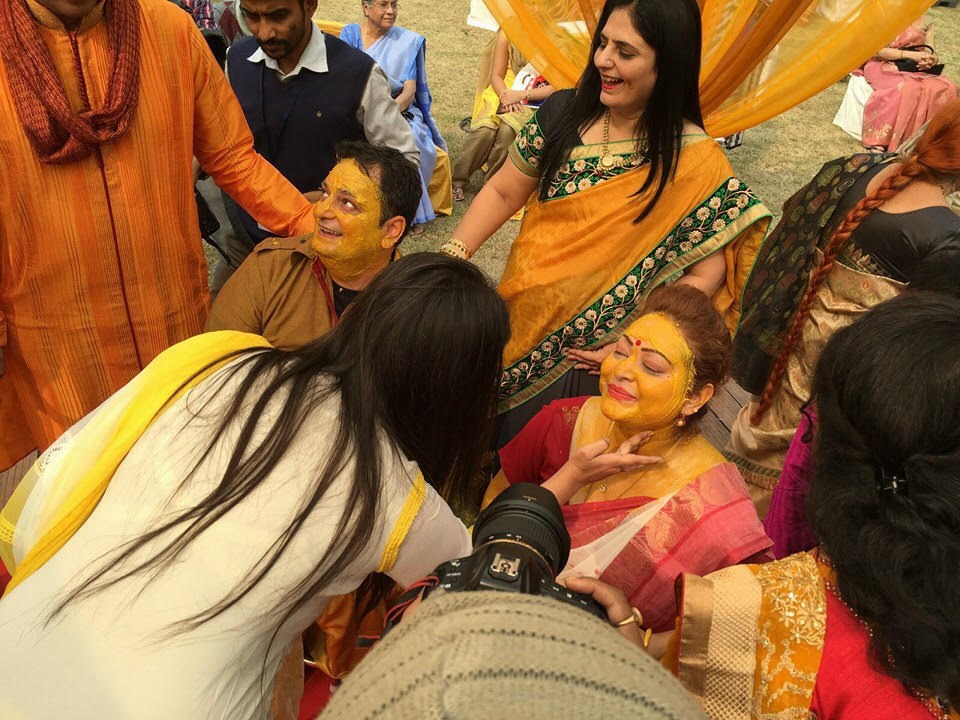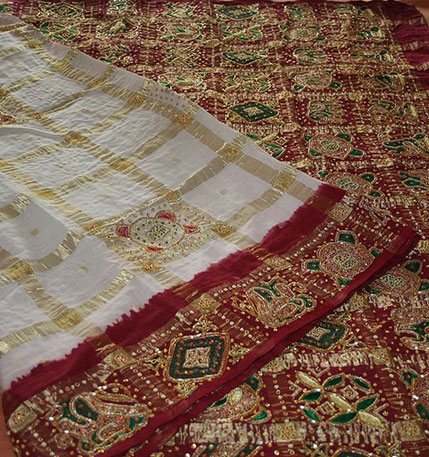
Why do we have wedding rituals? Why do we sanctify them? Learn them, memorize them and and call our all knowing ritual expert grand aunts to our weddings to ensure that nothing gets lost in repetition? Are we that really respectful towards our rituals? Your answers and mine might vary... right? But I can assure you of one particular wedding ritual that is beloved by all and is definitely here to stay. I'm thinking of Haldi of course; the celebration of turmeric. As long as we mostly dark skinned South Asians keep craving for light colored glowing skin, we'll gleefully smear turmeric on the bride and the groom and in case of Bengalis ... on everyone else as well! Turmeric along with mehendi and flowers are one of the few wedding must haves that transgress the boundaries of religion and culture and can be found in most weddings between Dhaka to Delhi. Isn't that something in this myriad culture of ours? Gaye Holud as we Bengalis call the haldi ceremony is one of the most fun events in an otherwise ritual and scripture heavy wedding ceremony. Pishis chasing kakus, jethus and pishemoshais (including their own husbands) and my mother chasing pretty much everyone with a sizeable portion of playdoughish turmeric paste, is my earliest memory of a wedding. I had actually broken an arm during my choto-pishi's wedding (long story), but that does not mar the golden memory of this very holi-ish fun event that I had witnessed for the first time as an almost four year old. It is a fantastic ice breaker that breaks the barrier between generations and a great kick off for any wedding ceremony. I only wish that it would include both the bride and groom (like it does in many families of East-Bengal on bashi biye) for a much needed bonding and team building exercise ;) Food for thought? We are after all the harbingers and vessels of carrying our culture, shouldn't our rituals conform to our needs?

The bride’s maternal uncle or mama has a very significant role to play in his niece’s wedding. The ritual called Mameru or Mosaru (literally, from the mama) takes place just the day before the wedding. It is him that gifts the bride her wedding saree, jewellery and choodo (ivory and red bangle set). The bride wears her mama’s gifted saree for her wedding the next day. This particular saree is called the Panetar.
The Panetar made of gajji silk, is traditionally in white with a red border and gold checks throughout. The border is often tie-dyed in bandhani. The combination is very interesting, specially because we associate the white saree- red border combination with the Bengalis. These days, the Panetar comes in other colours as well, but none match the beauty of the traditional colours. Worn in the seedha palla style, the saree with the choodo looks absolutely stunning.